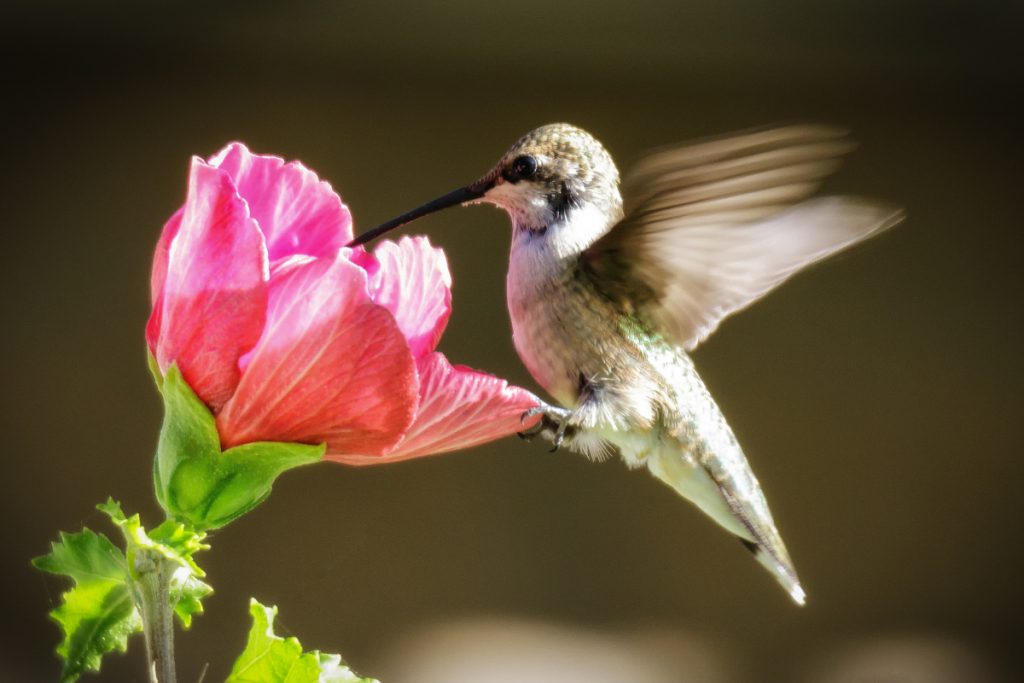Hummingbirds are constantly on the move, flitting from flower to flower in a blur. But when times get tough, they have a remarkable survival strategy – entering an energy-saving torpor state. This allows them to endure periods of scarcity and harsh conditions.
In this blog, we’ll uncover the secrets behind hummingbird torpor. From how they reduce their metabolic rate to why torpor is essential for making it through the year, you’ll learn all about their incredible survival adaptation!
What is Torpor?
Torpor is like a temporary mini-hibernation. Hummingbirds lower their metabolic rate by up to 95%, allowing them to conserve huge amounts of energy.
Their body temperature drops along with their breathing and heart rate. This puts them in a sleep-like state to get through challenging circumstances.
Activating Torpor
Hummingbirds primarily tap into torpor overnight when feeding stops. But they can also rapidly enter torpor when food suddenly becomes unavailable or conditions turn nasty.
So, torpor gives them tremendous flexibility to respond to environmental stresses. This saves energy until the situation improves.
Hummingbirds Surviving on Less Fuel

Hummingbirds have among the highest metabolism of all animals. They can burn through more than their entire body weight in nectar daily!
By suppressing their metabolism via torpor, hummingbirds slash their energy needs to just 5% of normal. This allows their tiny bodies to endure lean times.
Stretching Precious Calories
Imagine you’re a migrating hummingbird that suddenly encounters an unexpected cold snap. Flowers are frozen over, depriving you of nectar.
Activating torpor promptly reduces your fuel requirements to a bare minimum. This conserves precious fat stores to keep you powered until new food sources become available.
Making It Through the Night
Hummingbirds also depend on torpor to survive cold nights after gorging on nectar all day.
Resting Energy Expenditure
A hummingbird’s metabolic rate is so extreme that just sitting still for an hour burns up more energy than an entire night’s worth of torpor!
So, without using torpor, they couldn’t make it until dawn. Lowering their metabolism is the only way hummingbirds can obtain enough rest despite limited nighttime feeding.
By tapping into torpor, hummingbirds can withstand challenging conditions, from seasonal flower shortages to long, cold nights. It’s truly an astonishing survival adaptation!
Hummingbirds Coping with Harsh Environments

Scientists think torpor also enabled hummingbirds to expand across a variety of environments and altitudes.
High Mountain Living
Some hummingbird species inhabit elevations over 15,000 feet! Nights get extremely frigid, and flowers can be sparse.
But by tapping into torpor, hummingbirds can endure the thin air, cold, and limited food availability. This allows them to carve out a niche in harsh high-altitude zones.
So, torpor powers their success in otherwise inhospitable areas that pose energetic hardships.
Staying Alive Through Challenging Times
While hummingbirds lead active, energetic lifestyles when conditions allow, they also have a powerful survival adaptation up their sleeve.
By entering torpor, they can overcome shortages of food or warmth that might otherwise prove fatal. So next time you see a zippy hummingbird, remember this built-in coping mechanism that helps them make it through the year!
Thank you for reading this article. If you’ve found it valuable, we’d be delighted if you could share it with others. Your support means a lot to us. In the meantime, happy bird-watching.
Useful Links:
Related Posts to Read:
- Do Hummingbirds Beaks Open When Feeding?
- The Mysteries of Hummingbird Flight.
- 6 Fascinating Facts About Hummingbird Sizes.
- Ruby-Throated Hummingbird Migration Map.
- Where Do Hummingbirds Go When It Rains?
- How Much Does A Hummingbird Eat Per Day?
- Hummingbird Diet and Nutrition.
- Did You Know that Bathing is Crucial for Hummingbirds?
References:
- About Hummingbird (Link).
- Greenewalt, C. H. (1960). Hummingbirds. New York: Doubleday. Google Scholar.
- Carey C. The impacts of climate change on the annual cycles of birds. Philos Trans R Soc Lond B Biol Sci. 2009 Nov 27; 364(1534):3321-30. doi: 10.1098/rstb.2009.0182. PMID: 19833644; PMCID: PMC2781852.
- Rico-Guevara A, Rubega MA, Hurme KJ, Dudley R. Shifting Paradigms in the Mechanics of Nectar Extraction and Hummingbird Bill Morphology. Integr Org Biol. 2019 Jan 2;1(1):oby006. doi: 10.1093/iob/oby006. PMID: 33791513; PMCID: PMC7671138.
- Tyrrell LP, Goller B, Moore BA, Altshuler DL, Fernández-Juricic E. The Orientation of Visual Space from the Perspective of Hummingbirds. Front Neurosci. 2018 Jan 30;12:16. doi: 10.3389/fnins.2018.00016. PMID: 29440985; PMCID: PMC5797624.
- Hummingbirds Sighting (Journey North Map).
- About Hummingbird’s Characteristics.
